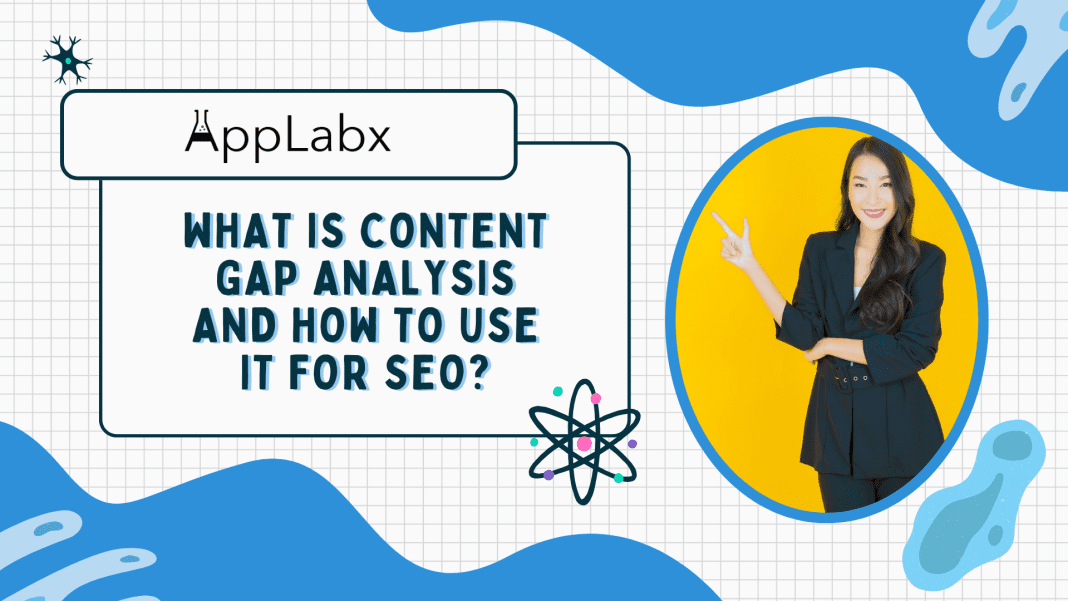Key Takeaways
- Strategic Insight: Elevate your SEO game by understanding competitors, identifying content gaps, and strategically filling them for enhanced online visibility.
- Precision in Execution: Learn the step-by-step process, from competitor identification to keyword research. Implement Content Gap Analysis with precision for impactful SEO results.
- Continuous Improvement: Embrace the evergreen relevance of Content Gap Analysis. Constantly adapt to industry changes, user behavior, and emerging trends to shape a future of SEO excellence.
In the ever-evolving landscape of digital marketing, staying ahead of the curve is not just a goal—it’s a necessity.
As businesses strive to outshine competitors and secure their digital footprint, mastering the art of Search Engine Optimization (SEO) becomes paramount.
One strategy that has emerged as a game-changer in the SEO realm is Content Gap Analysis—an indispensable tool that unveils hidden opportunities and empowers businesses to fine-tune their content strategies.
In this comprehensive guide, we embark on a journey to demystify the concept of Content Gap Analysis and unravel its significance in the realm of SEO.
Whether you’re a seasoned SEO professional looking to sharpen your arsenal of techniques or a newcomer eager to harness the full potential of digital marketing, this blog promises to be your beacon of knowledge.

Defining the Unseen Opportunities
Content Gap Analysis is more than just a buzzword; it’s a methodical approach that allows businesses to identify gaps and opportunities within their content strategy.
Picture your website as a puzzle—each piece representing a crucial aspect of your online presence.
Content Gap Analysis helps you identify missing pieces and strategically place them to complete the picture.
The SEO Alchemy: Turning Gaps into Gold
SEO is not just about ranking high on search engine result pages; it’s about providing value to your audience.
Content Gap Analysis bridges the divide between what your audience is searching for and what your content currently offers.
By uncovering the keywords, topics, and themes your competitors have successfully capitalized on, you gain the power to refine your content strategy and tailor it to meet the ever-changing needs of your target audience.
A Symphony of Data: The Components of Content Gap Analysis
To truly grasp the significance of Content Gap Analysis, one must delve into its intricate components.
From identifying key competitors in your niche to conducting meticulous keyword research and evaluating the relevance of existing content, this process is a symphony of data that, when orchestrated effectively, produces harmonious results in your SEO strategy.
Embarking on the Content Gap Analysis Odyssey
In the following sections, we will guide you through a step-by-step journey, breaking down the complexities of Content Gap Analysis into manageable and actionable insights.
Whether you’re a solo entrepreneur managing your online presence or a part of a dynamic marketing team steering a larger ship, our guide will equip you with the knowledge and tools to perform Content Gap Analysis with confidence.
But before we embark on this odyssey, let’s understand why Content Gap Analysis deserves a prime spot in your SEO arsenal and explore the myriad ways it can transform your digital presence.
Get ready to transcend the ordinary, as we dive deep into the world of Content Gap Analysis and illuminate the path to SEO excellence.
But, before we venture further, we like to share who we are and what we do.
About AppLabx
From developing a solid marketing plan to creating compelling content, optimizing for search engines, leveraging social media, and utilizing paid advertising, AppLabx offers a comprehensive suite of digital marketing services designed to drive growth and profitability for your business.
AppLabx is well known for helping companies and startups use SEO to drive web traffic to their websites and web apps.
At AppLabx, we understand that no two businesses are alike. That’s why we take a personalized approach to every project, working closely with our clients to understand their unique needs and goals, and developing customized strategies to help them achieve success.
If you need a digital consultation, then send in an inquiry here.
What is Content Gap Analysis and How to Use It for SEO?
- Understanding Content Gap Analysis
- How to Perform Content Gap Analysis
- Common Challenges in Content Gap Analysis
- Tips for Effective Content Gap Analysis
1. Understanding Content Gap Analysis
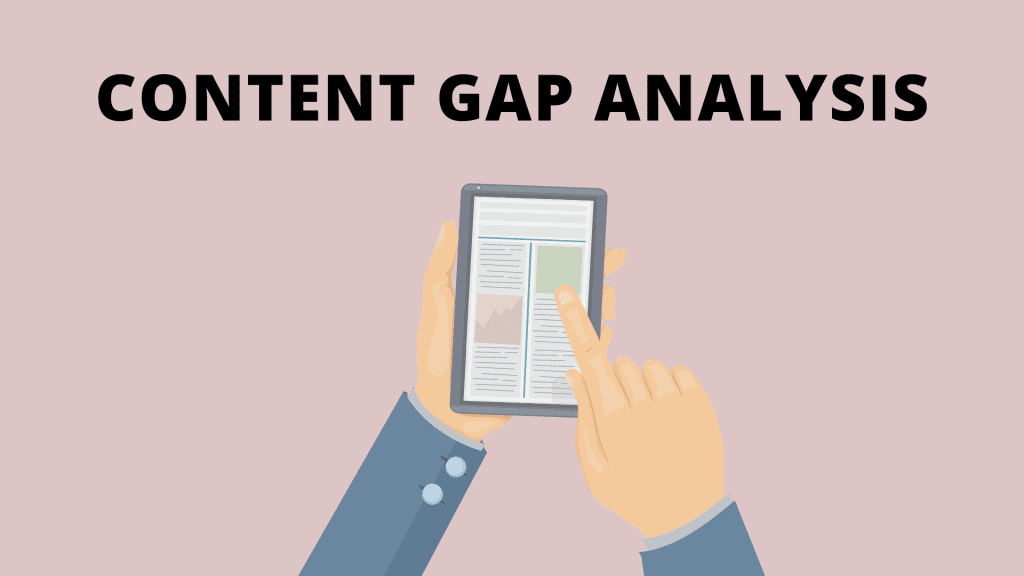
Defining Content Gap Analysis
Content Gap Analysis, at its core, is a strategic method that involves identifying gaps in your existing content and comparing it to the content of your competitors.
It’s a meticulous examination that goes beyond keyword research, offering insights into the topics and themes that your competitors have covered successfully, but you might have overlooked.
By understanding what your competitors are doing well, you can capitalize on those opportunities and enhance your own content strategy.
Key Components:
- Identifying Competitors: Begin by pinpointing your main competitors in the online space. These are the businesses or websites that consistently rank high for keywords relevant to your industry.
- Analyzing Keywords and Topics: Conduct thorough keyword research to understand the language your audience uses when searching for content in your niche. Identify the core topics that resonate with your target audience.
- Evaluating Content Relevance: Assess the relevance and quality of your existing content. Determine whether it aligns with the needs and preferences of your audience.
Example:
A company in the fitness industry wants to boost its online presence.
By conducting the Content Gap Analysis, it discovers that its competitor consistently produces content about “at-home workout routines” and “nutrition for busy professionals.
The analysis reveals a gap in the company’s own content strategy, indicating an opportunity to create valuable content in these areas.

Importance of Content Gap Analysis in SEO
Bridging the Content Void:
Content Gap Analysis serves as a bridge between what your audience is actively searching for and what your content currently provides.
This alignment is crucial for SEO success as search engines aim to deliver the most relevant results to users.
Enhancing Keyword Targeting:
By understanding the keywords your competitors rank for, you gain valuable insights into high-performing keywords in your industry.
This knowledge allows you to optimize your content with targeted keywords, boosting your chances of ranking higher in search engine results.
Benefits of Content Gap Analysis in SEO
Uncovering Untapped Opportunities:
Content Gap Analysis goes beyond conventional SEO strategies by revealing untapped opportunities that might not be evident through standard keyword research.
These opportunities could include emerging trends, niche-specific topics, or gaps in your competitor’s content that you can exploit.
Strengthening Competitiveness:
In a competitive online landscape, staying ahead is paramount.
Content Gap Analysis empowers you to not only keep pace with your competitors but also surpass them by addressing content voids and offering more comprehensive information to your audience.
2. How to Perform Content Gap Analysis
Performing Content Gap Analysis involves a systematic approach to uncovering opportunities in your content strategy.
By following these steps, you can identify areas where your competitors excel and strategically fill those gaps to enhance your SEO efforts.

Identifying Competitors in Your Niche
- Why it Matters:
- Recognizing your competitors is the first step in understanding the competitive landscape. This knowledge enables you to benchmark your performance and identify areas for improvement.
- How to Do It:
- Utilize tools like Semrush, Ahrefs, or Google Alerts to identify competitors’ ranking for keywords relevant to your industry.
- Example:
- A digital marketing agency identifies three main competitors by analyzing search engine results for key industry terms. These competitors consistently rank high for relevant keywords.

Conducting Keyword Research
- Why it Matters:
- Keywords are the building blocks of content. Conducting thorough keyword research helps you understand what your audience is searching for and identifies gaps in your keyword strategy.
- How to Do It:
- Use tools like Google Keyword Planner, Ubersuggest, or Semrush to identify high-volume keywords relevant to your industry.
Analyzing Existing Content
- Why it Matters:
- Evaluating your current content is essential to understanding what topics and keywords you’ve already covered. It helps identify gaps and areas where improvement is needed.
- How to Do It:
- Create a comprehensive inventory of your existing content, categorizing it based on topics and keywords.
- Example:
- An e-commerce website assesses its blog posts and product descriptions. They find that while they have extensive content on product features, there’s a lack of content addressing common customer queries and concerns.

Identifying Content Gaps
- Why it Matters:
- Identifying content gaps is the core of Content Gap Analysis. It reveals opportunities where your competitors are outperforming you and helps you prioritize content creation.
- How to Do It:
- Compare your keyword and topic coverage with that of your competitors. Look for areas where they excel but you have limited or no content.
- Example:
- Content Gap Analysis can reveal that a travel blog’s competitor consistently ranks for “budget-friendly travel tips,” while the blog itself lacks in-depth coverage on this topic

Prioritizing Content Opportunities
- Why it Matters:
- Prioritizing content opportunities ensures that your efforts are focused on areas that will yield the most significant impact. It helps in resource allocation and planning.
- How to Do It:
- Consider factors such as search volume, user intent, and your current website authority to prioritize content creation.
- Example:
- A software company prioritizes creating in-depth guides on emerging technologies based on Content Gap Analysis, as these topics align with their audience’s current interests.
Tools for Content Gap Analysis
Selecting the right tools for Content Gap Analysis is crucial for accurate and efficient results.
Leveraging a combination of tools enhances the depth of your analysis.
Keyword Research Tools
- Semrush:
- Provides detailed insights into competitors’ organic search performance and allows you to identify gaps in your keyword strategy.
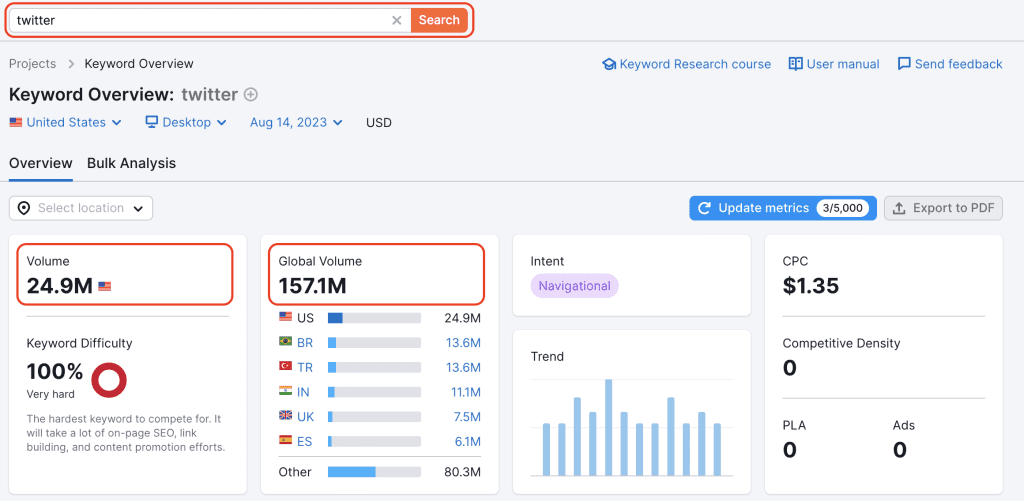
- Ahrefs:
- Offers a comprehensive keyword explorer tool that helps in identifying relevant keywords and their search volumes.
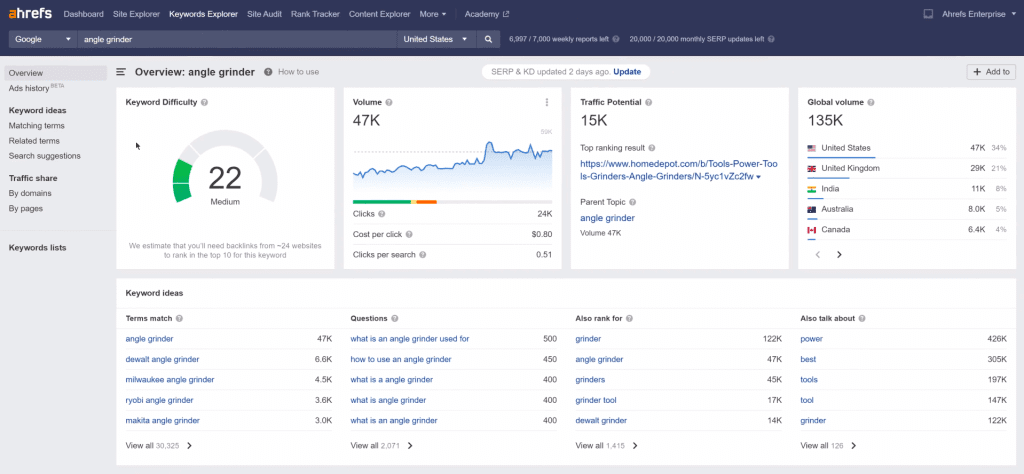
Competitor Analysis Tools
- Semrush:
- Allows you to analyze competitors’ content strategies, backlink profiles, and keyword rankings.
- BuzzSumo:
- Helps identify the most shared content of competitors, revealing popular topics in your industry.

SEO Analytics Platforms
- Google Analytics:
- Provides data on your website’s performance, user behaviour, and the effectiveness of your content strategy.

- Google Search Console:
- Offers insights into how your site appears in search results and identifies keywords driving traffic to your site.
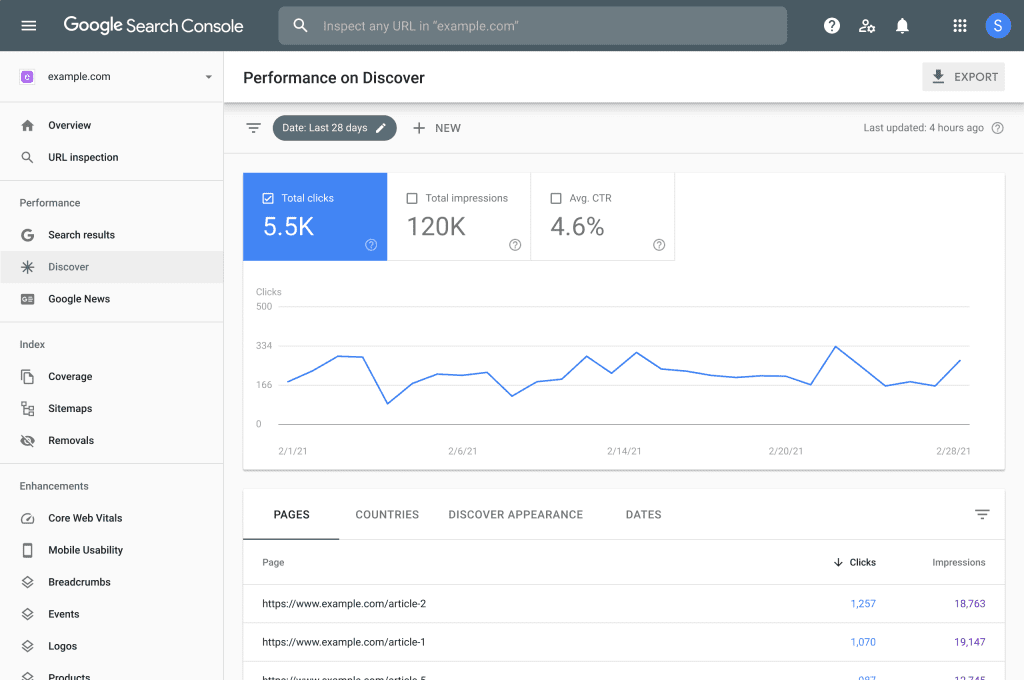
3. Common Challenges in Content Gap Analysis
While Content Gap Analysis is a powerful tool for enhancing your SEO strategy, it’s not without its challenges.
Recognizing and navigating these hurdles is crucial for ensuring the accuracy and effectiveness of your analysis.
In this section, we’ll delve into some of the common challenges associated with Content Gap Analysis and provide insights on how to overcome them.

Data Accuracy and Completeness
Challenge: Inaccurate or Incomplete Data
- Issue:
- One of the primary challenges in Content Gap Analysis is the reliance on data that may be inaccurate or incomplete. This can lead to misguided strategies and missed opportunities.
- Impact:
- Making decisions based on inaccurate data can result in suboptimal content creation and misguided SEO efforts.
- Mitigation:
- Cross-verify data from multiple sources and use reputable tools that provide accurate and comprehensive insights.
- Example:
- A business relies solely on a single keyword research tool, overlooking variations in data accuracy. This might result in content creation based on inaccurate keyword insights, leading to a decline in organic traffic.
Challenge: Dynamic Nature of Search Algorithms
- Issue:
- Search algorithms frequently evolve, impacting the accuracy of data used in Content Gap Analysis.
- Impact:
- Outdated data may not accurately reflect current search trends and user behaviour.
- Mitigation:
- Stay informed about algorithm updates and regularly refresh your data to ensure relevance.
- Example:
- Google makes thousands of changes every year, emphasizing the need for continuous monitoring and adaptation in Content Gap Analysis.
Interpreting Results
Challenge: Lack of Nuanced Interpretation
- Issue:
- Understanding the why behind content gaps requires a nuanced approach that goes beyond quantitative analysis.
- Impact:
- Misinterpretation may lead to addressing symptoms rather than the root causes of content gaps.
- Mitigation:
- Combine quantitative data with qualitative insights to gain a comprehensive understanding.
- Example:
- Identifying a keyword gap, a company creates content without considering user intent. The resulting content fails to engage the audience effectively.
Challenge: Overemphasis on Keyword Gaps
- Issue:
- Focusing solely on keyword gaps without considering overall content themes can result in a one-dimensional strategy.
- Impact:
- Content may lack depth and relevance, missing the opportunity to provide comprehensive information.
- Mitigation:
- Balance keyword analysis with an assessment of broader content themes for a holistic approach.
- Example:
- A blog identifies keyword gaps but overlooks the fact that its competitor’s success lies in the depth and detail of content rather than just keyword density.
Staying Updated with Industry Changes
Challenge: Rapid Changes in User Behavior
- Issue:
- Evolving user behaviour, influenced by trends and technology, can quickly render content strategies outdated.
- Impact:
- Failure to adapt to changing user preferences may result in content gaps that go unnoticed.
- Mitigation:
- Stay informed through industry publications, webinars, and continuous monitoring of analytics to identify shifts in user behaviour.
- Example:
- A social media platform sees a surge in video content consumption. Failing to adapt, a content creator might experience a decline in engagement due to an absence of video content.
Challenge: Emerging Trends and Technologies
- Issue:
- Failure to identify and incorporate emerging trends in content can lead to missed opportunities.
- Impact:
- Content gaps may arise as competitors embrace new formats, platforms, or technologies.
- Mitigation:
- Regularly assess industry trends and be agile in adopting new content formats or platforms.
- Example:
- A news website quickly adopts podcasting as a content format after noticing a rising trend. This strategic move might fill a content gap and significantly increase audience engagement.
4. Tips for Effective Content Gap Analysis
Mastering Content Gap Analysis is crucial for a robust SEO strategy. To harness its full potential, businesses must employ effective techniques.
In this section, we’ll explore a set of actionable tips designed to enhance the efficiency and accuracy of your Content Gap Analysis.

Utilizing Long-Tail Keywords
Leverage the Power of Long-Tail Keywords
- Importance:
- Long-tail keywords often represent specific user intent, capturing a more targeted audience.
- 92% of all keywords have a search volume of fewer than ten searches per month, emphasizing their significance in capturing niche audiences.
- Example:
- A travel blog identifies a gap in its content related to “off-the-beaten-path destinations.” By incorporating long-tail keywords such as “hidden gems in travel,” the blog might attract a more engaged audience seeking unconventional travel experiences.

Focusing on User Intent
Understand and Prioritize User Intent
- Importance:
- Aligning content with user intent is crucial for providing valuable information and improving user experience.
- According to Google, 53% of visits are abandoned if a mobile site takes longer than 3 seconds to load, emphasizing the importance of delivering content aligned with user expectations.
- Example:
- An e-commerce site discovers a gap in content related to “product comparison guides.” By creating content that addresses user intent for informed purchasing decisions, the site might experience a significant decrease in bounce rates and an increase in conversions.
Incorporating Multimedia Content
Diversify Your Content with Multimedia Elements
- Importance:
- Multimedia content enhances user engagement and caters to different learning preferences.
- An email including a video can increase your email click-through rate by up to 300%.
- Example:
- A cooking blog identifies a content gap in video recipes. By incorporating step-by-step cooking videos alongside traditional recipes, the blog might experience a surge in user engagement, with users spending more time on the site.

Tips for Tool Selection in Content Gap Analysis
Choose Comprehensive Keyword Research Tools
- Recommendation:
- Tools like Semrush and Ahrefs offer robust features for keyword research, competitor analysis, and identifying content gaps.
Use Competitor Analysis Tools for Insightful Data
- Recommendation:
- Tools such as Semrush and BuzzSumo provide in-depth competitor analysis, revealing top-performing content and potential gaps.
- Example:
- A tech company leverages Semrush to analyze competitor backlink profiles, uncovering valuable linking opportunities and addressing gaps in its link-building strategy.
Employ SEO Analytics Platforms for Holistic Insights
- Recommendation:
- Google Analytics and Google Search Console offer valuable insights into your website’s performance, user behaviour, and keyword rankings.
- Example:
- A blog uses Google Analytics to identify high-traffic pages with low conversion rates. Content Gap Analysis helps them optimize these pages, resulting in a significant increase in conversions.
Conclusion
In the ever-evolving landscape of digital marketing, staying ahead requires strategic insights and adaptive approaches.
Content Gap Analysis emerges as a beacon, guiding businesses to not just understand their competitive landscape but to actively shape it.
As we conclude our exploration into “What is Content Gap Analysis and How to Use It for SEO,” it’s evident that this technique is not merely a tool; it’s a transformative force that can elevate your SEO strategy to unprecedented heights.
The Dynamic Nature of Content Gap Analysis
Content Gap Analysis is dynamic, mirroring the constant shifts in user behaviour, search algorithms, and industry trends.
The journey begins with the meticulous identification of competitors – a foundational step that sets the stage for a comprehensive analysis.
By leveraging tools such as Semrush, Ahrefs, and Google Alerts, businesses can pinpoint competitors’ strengths, weaknesses, and the keywords that propel them to the forefront of search engine results.
Strategic Steps in Content Gap Analysis
As we’ve explored, the strategic steps involved in Content Gap Analysis are multi-faceted.
From conducting thorough keyword research with tools like Google Keyword Planner and Ubersuggest to evaluating existing content’s relevance, the process demands attention to detail.
It’s not just about identifying content gaps; it’s about understanding user intent, aligning with industry trends, and creating a content strategy that resonates with the target audience.
Choosing the Right Tools: A Key Element in Success
Selecting the right tools for Content Gap Analysis is akin to choosing the right instruments for a symphony.
Tools like Semrush, Ahrefs, Google Analytics, and Google Search Console form the orchestra, harmonizing insights, and providing a holistic view of your SEO landscape.
Their significance is substantiated by statistics, as seen in the wide user adoption of Semrush for keyword research.
Pitfalls to Dodge: Nurturing Quality and Context
In the pursuit of SEO excellence, it’s crucial to avoid common pitfalls.
Content quality must always trump quantity, and the context of competitors’ success should be thoroughly understood.
Pitfalls such as neglecting content quality for the sake of filling gaps or overlooking the unique storytelling approaches of competitors can hinder the effectiveness of Content Gap Analysis.
The Evergreen Relevance of Content Gap Analysis
As we conclude our exploration, it’s vital to emphasize that Content Gap Analysis isn’t a one-time endeavour; it’s a continuous journey. Industry changes, user preferences, and search algorithms evolve, demanding a constant reassessment of content strategies.
The tips, tools, and insights garnered from Content Gap Analysis serve as a compass, guiding businesses through the dynamic terrain of digital marketing.
If you are looking for a top-class digital marketer, then book a free consultation slot here.
If you find this article useful, why not share it with your friends and business partners, and also leave a nice comment below?
We, at the AppLabx Research Team, strive to bring the latest and most meaningful data, guides, and statistics to your doorstep.
To get access to top-quality guides, click over to the AppLabx Blog.
People also ask
How to do a content gap analysis for SEO?
To perform a content gap analysis for SEO, identify competitors, conduct thorough keyword research, assess existing content, and pinpoint gaps. Compare competitors’ keyword strategies, user intent, and content themes. Prioritize high-opportunity gaps and create targeted, valuable content to improve SEO performance.
How to do a gap analysis for a website?
Conducting a website gap analysis involves defining goals, auditing current content and performance, identifying gaps against industry benchmarks, and prioritizing improvements. Assess user experience, content relevance, and technical aspects. Implement changes to bridge gaps and enhance overall website effectiveness.
How do I find the keyword gap in SEO?
To find keyword gaps in SEO, use tools like Semrush or Ahrefs. Identify competitors, analyze their target keywords, and compare them with your own. Uncover opportunities where they rank, and you don’t. Prioritize these gaps to refine your content strategy, boost rankings, and capture untapped search traffic.


























